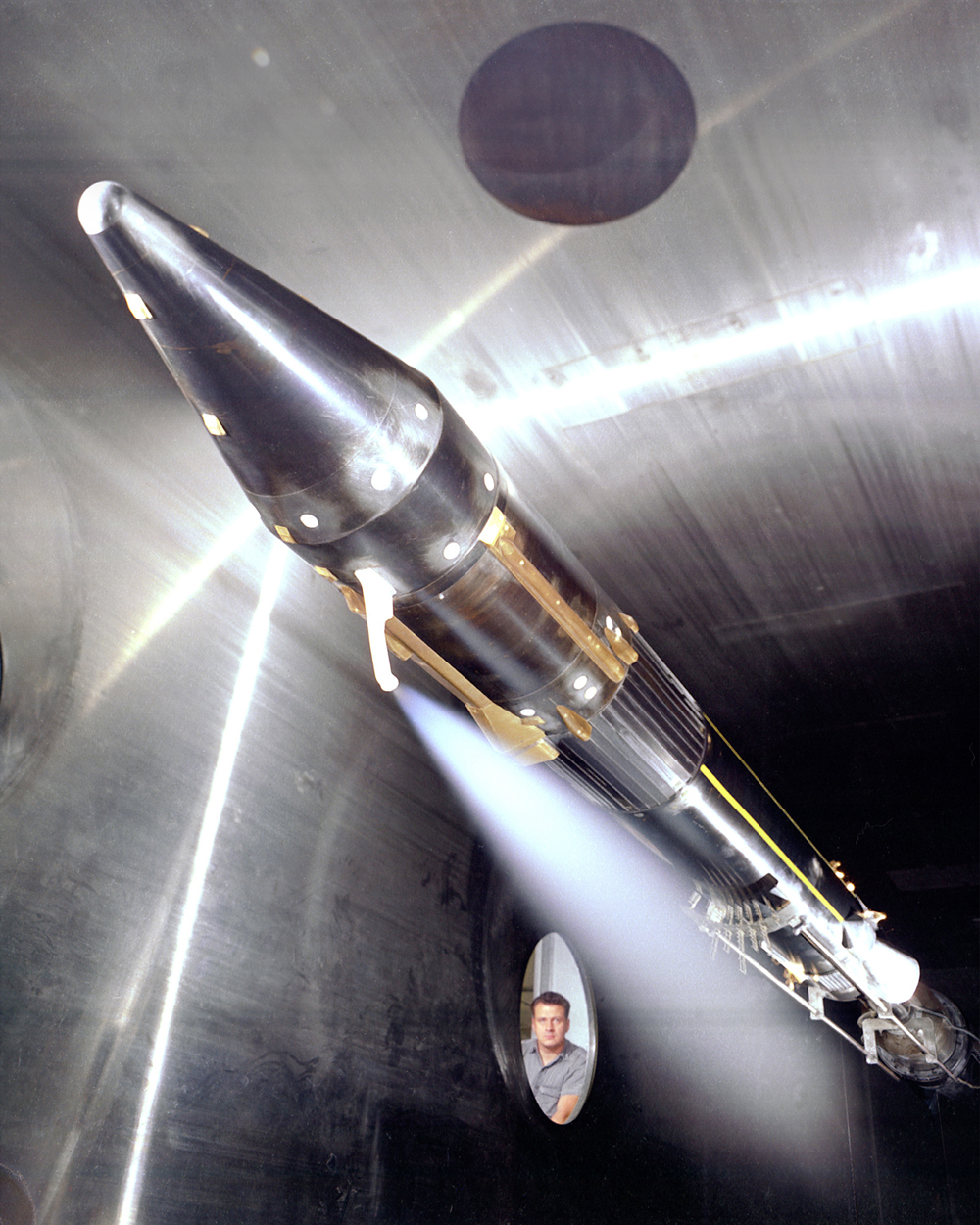Space History Photo: Vent Flowing Cold Gas and T/C Rake

In this historical photo from the U.S. space agency, a vent flowing cryogenic fuel and T/C Rake are mounted on a 1/10 scale model Centaur in the l0 x l0 Foot Supersonic Wind Tunnel in September, 1963. The fuel being used is liquid hydrogen.
The point of the test is to determine how far to expel venting fuel from the rocket body to prevent explosion at the base of the vehicle. This vent is used as a safety valve for the fumes created when loading the fuel tanks during launch preparation. Liquid hydrogen has to be kept at a very low temperature. As it heats, it turns to gas and increases pressure in the tank. It therefore has to be vented overboard while the rocket sits on the pad. The test is being run at the Lewis Research Center, now known as John H. Glenn Research Center, Lewis Field.
Each weekday, SPACE.com looks back at the history of spaceflight through photos (archive).
Breaking space news, the latest updates on rocket launches, skywatching events and more!

The National Aeronautics and Space Administration (NASA) is the U.S. government agency in charge of the civilian space program as well as aeronautics and aerospace research. Founded in 1958, NASA is a civilian space agency aimed at exploring the universe with space telescopes, satellites, robotic spacecraft, astronauts and more. The space agency has 10 major centers based across the U.S. and launches robotic and crewed missions from the Kennedy Space Center in Cape Canaveral Florida. Its astronaut corps is based at the Johnson Space Center in Houston. To follow NASA's latest mission, follow the space agency on Twitter or any other social channel, visit: nasa.gov.
